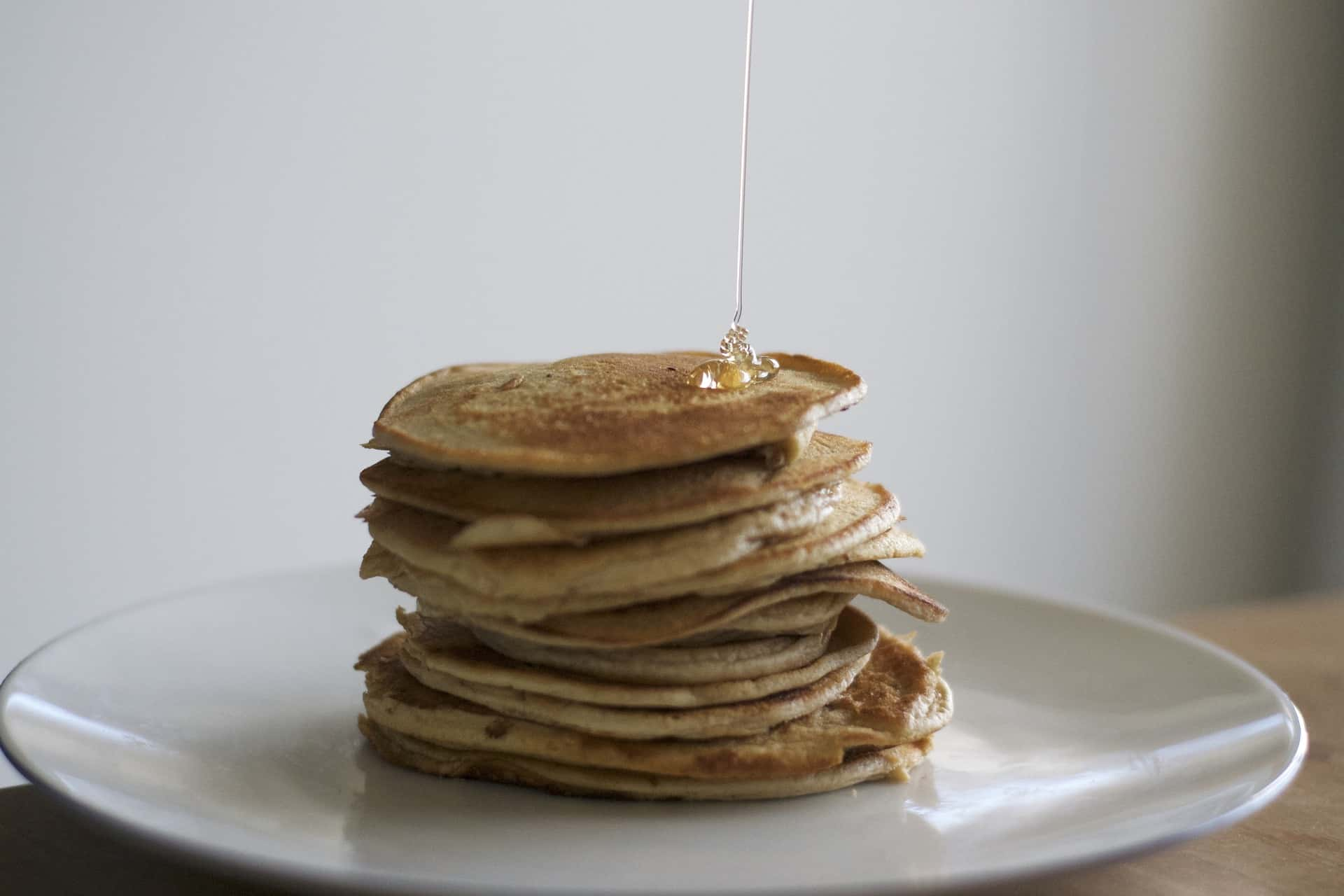There’s more than one way to skin a cat, as the distinctly unappetizing saying goes. That phrase should actually be changed to there’s more than one way to make a pancake for a few reasons. A) it’s way less gruesome and B) few things are more true. From crepes to buttermilk to gluten-free to vegan, there’s a pancake for everyone out there. And there are a variety of different ways to make 'em! Get out your mixing bowl and frying pan while we teach you how to make pancakes.
What Ingredients Are in Pancakes?
Most pancakes are made from a batter base that usually contains eggs, flour, and milk. In North America, pancake makers often add baking powder (for fluffiness) or buttermilk (for a tangy flavor). The batter is then cooked on an oiled or buttered surface, like a griddle or a hot frying pan. When the pancakes are done, the cook serves them with butter and syrup.
There are many, many variations for pancake fillings. From blueberries, chocolate chips, and bananas to chocolate syrup, jam, and whipped cream, everyone has their own favorite!
Where Are Pancakes From?
Pancakes are actually one of the earliest grain-based foods in the entire world. All the way back in ancient Greece, our forefathers mixed flour, olive oil, curdled milk, and honey and then cooked the batter in a frying pan. From there, the glorious concept of the pancake spread far and wide. Variations of the pancake exist on every continent—many of which you might regularly eat without considering their similarities to the North American pancake. There’s Ethiopian injera, Chinese scallion pancakes, Indian dosas, Russian blini, and Japanese okonomiyaki, among others.
Pancakes vs. Crepes
In North America, we’re used to fluffy pancakes (leavened with the help of baking powder in the batter), but in England and France, they’re accustomed to a flatter type of cake, often called a crepe. Crepes are nearly paper-thin, can be sweet or savory, and can be served with any variety of filling or topping. There's the simple side of the pancake spectrum—sugar and lemon or simply butter—and then there's the more elaborate variations. Crepes Suzette involves orange zest and liqueur, and are set ablaze before serving. Hungry yet?
How to Cook Pancakes
As previously mentioned, most recipes for pancakes call for flour, eggs, and milk, but they can also include baking powder, salt, and sugar—and that’s just to start. There are also boxed mixes for pancakes, some of which require milk and eggs, others which just call for water. For a fluffy pancake with a nice golden crust, heat a frying pan until hot, and add a dollop of butter. When it’s sizzling or bubbling, ladle approximately one-quarter cup of pancake batter into the pan.
After a minute or two, bubbles will begin to form on the surface. It’s hard to flip a pancake unless that first side is cooked, so feel around the edges with a spatula in order to gauge whether it’ll stay together. Once you flip the pancake, just a minute or two more for the other side to cook will do it. Remove the cooked pancake from the pan and repeat with the rest of the batter. Serve with butter and maple syrup, or more elaborate toppings, and enjoy!
















